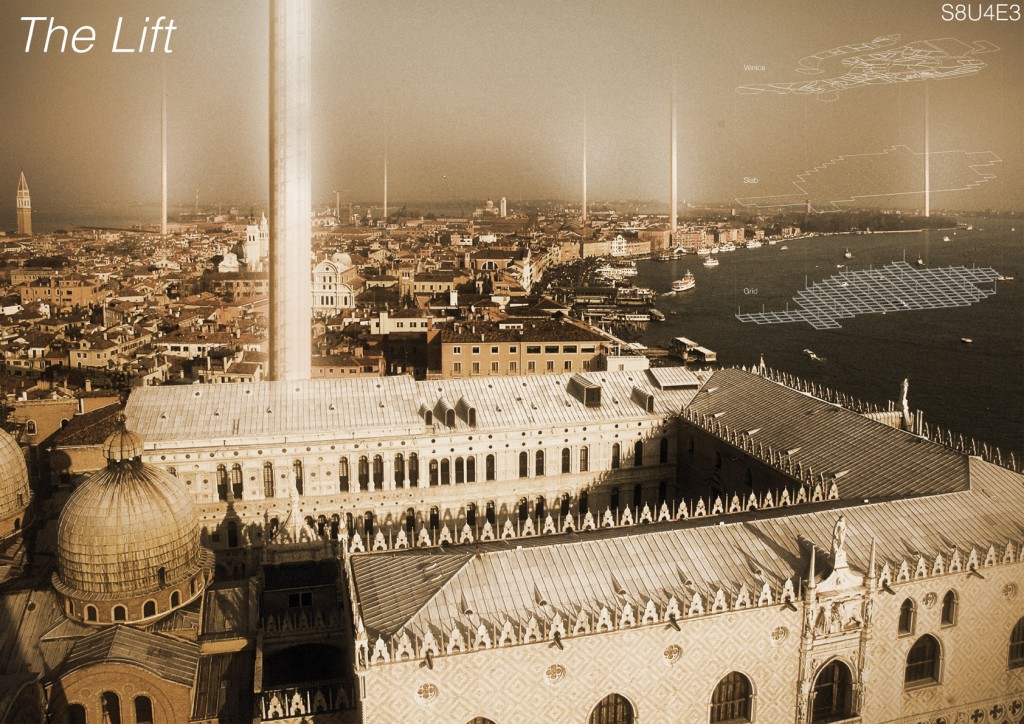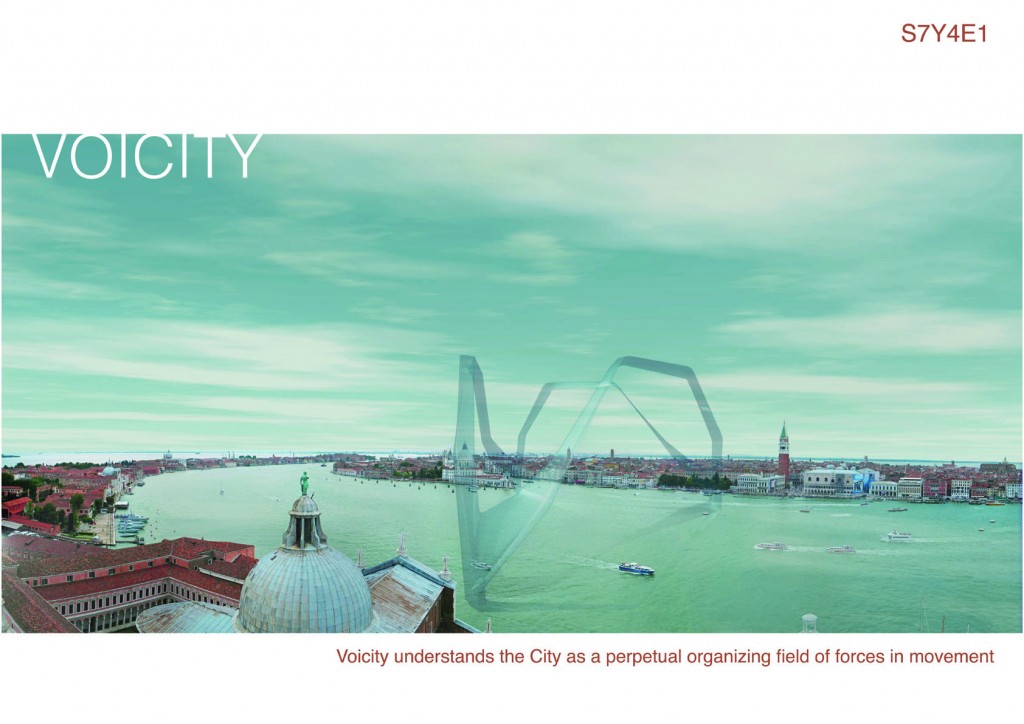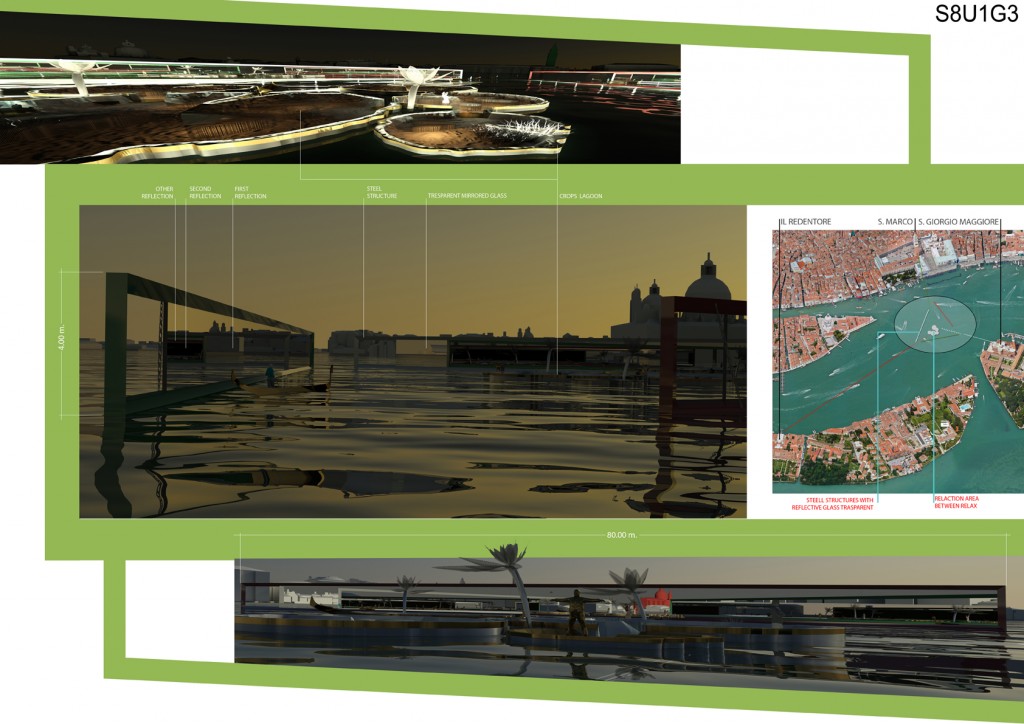Info:
Title: Venice - Code: S8U1G3Contest: Venice / 2011
By: A. N. Libutti
Views: 2313 Likes: 0
Votes:
BJARKE INGELS5 NERI OXMAN5 ELENA MANFERDINI4 MARIA LUDOVICA TRAMONTIN4 BOSTJAN VUGA13.8
Venice
Which thought, which favourite issue, which particular space, in the whole of complexity of a city of yesterday, today and tomorrow. Can we try to analize, harmonize and enrich with particular attention? To this riflexive and big question, a possible and probable answer is availing of an idea. In its enormous size, the idea is to create a phase of initialization towards sceneries of historical and contemporary awareness and, at the same time, turned to the future. With this intention the idea, in its complex, can be subjectively imaginated whit many variants, with reference to archaic and future technologies, probably to arrive at the end with social-economical developing dynamics.
Moreover we can’t leave off the contemporary space, which frequently contribuites to nullify the good result of any intervention.
It often assumes the different list of an hard observator, of an irriducible dictator, of a critical obsolete etc.
It seems like in the majority of the operations of recovery, of renovation and design preposition missing that very public and explicit initialization should manifestate, through any artistic expression and with maximum amplitude, to explain the next few scenarios that could trigger and check later. Then appears as a contradiction to imagine a “manufactured” to awaken and to introduce one or more works to think about and realize in the future. So the initialization phase is nothing more than introductory work testifies to the desire and need for an attempt at renewal in a given area at a given time, not to boast of being a work of art but only a witness to subjective points of “view” reflective.
The intent of this particular witness-rolling is to invite a multitude of subjects in reflective thinking and visual at the same time generating new sensations but most importantly, we educate the exercise of common reflection, imagination and meditation so that the complexity of phenomenal through interdisciplinary, showing the multitude of individuals express.
The whole idea of ??the project is summarized by two components, one belonging to the scientific sphere and the other in the most poetic. The first component relies on a simple principle of classical physics by borrowing from the branch of optics, that kaleidoscope as a game born in 1817, the Scottish physicist D. Brewster, to reinterpret it by changing both the materials and the organization. It is no longer a simple three mirror surfaces together and placed between them an angle of 60 degrees but reflective surfaces at the same time transparent intermediary with the same angle, independent and separate.
The space interposed between the reflective surfaces and lets hear what is between the center of gravity of the prism kaleidoscope-horizon. These perceptions are generated in the three vertices of the same prism kaleidoscope-and in turn are reflected by multiple mergers of images in order to generate and raise the subjective points of “view” reflexive first mentioned.
The dynamics of both reflected light depends on the visual, by time, by the users of space extroverted and introverted center of gravity of the prism, kaleidoscope and the same space that includes everything.
The poetic element is closely tied to the previous, seemingly only a scientific, fact-kaleidoscope prism vertices are oriented in directions of three splendid architecture, rooted in the city of Venice, giving me to imagine the visual suggestiveness and possible combinations that generate on reflective surfaces.
Inside the space is divided into elements which recall the Greek mythology of the “Nymph”, with girls of marriageable age and prone to generate nascent future lives that result in random images, research and meditation. The morphology of these natural aquatic plants (nymphs), stretched out on the water layer, partially covering the base of the prism, it is defined by vertical surfaces from reflective and transparent from the outside. The outline of the leaves, slightly raised, ensure the surface waters of the same and at the same time prevents their overlap. All this is happening and made the interior and exterior of the prism-kaleidoscope-nymph is recorded, combined, and finally translated into visions meditated by the individual user, to observe in the distance, getting closer to it, be in close proximity, enter inside, pause and take a return, perhaps is a valuable exercise for future visions.
The installation of the prism-kaleidoscope may be repeated at different sizes, suitably designed to implant in other areas of the same or other towns.
The design concept of the kaleidoscope-prism remains unchanged even if it includes the installation of a roundabout road, a portion of a widening or any of a historic square, whatever space they interact will always emerge the singularity of the visions of each user .
In celebration of the sesquicentennial year of the unification of Italy take the opportunity to raise awareness of the project idea with the colors of the Italian flag.
The kaleidoscope was born in 1817 and during its 194 years of life has undergone a number of applications and variations that essentially limited to the reproduction of an object takes up little space and store it on a table, while the kaleido-vision is not an object but a concept living within it to be part of those “discussions” aimed at striking historical and contemporary visions of the future.
Info:
Title: Venice
Time: 6 giugno 2011
Category: Venice
Views: 2313 Likes: 0
Tags: Big Pink , Future , Jean-Paul Gaultier , Kaleidoscope , Libutti , Paris Fashion Week , Prism , Riccardo Tisci , Venice








